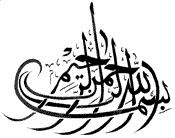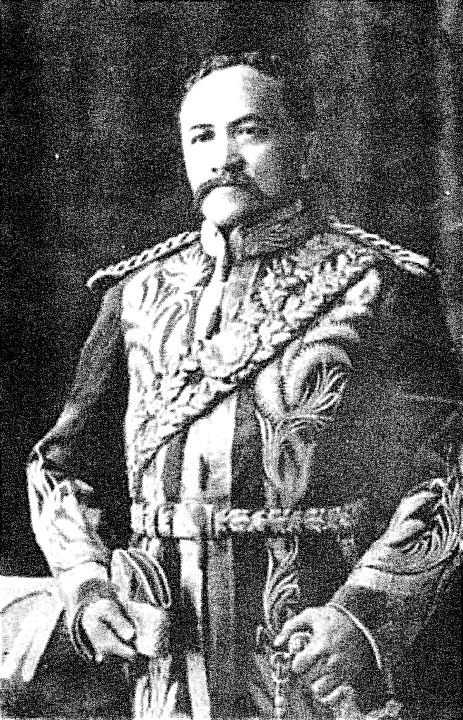Hmm... This needs a long explanation and a lot of background knowledge actually. So let me just copy and paste these bits from the Wikipedia...
The Pangkor Treaty of 1874 was a treaty signed between the British and the Sultan of Perak. Signed on January 20, 1874 on the island of Pangkor off Perak, the treaty is significant in history of the Malay states as it signalled official British involvement in the policies of the Malays.
Precedence
Perak was a major tin producer throughout the nineteenth century, leading the UK, which had already obtained Penang, Malacca and Singapore, to consider Perak of significant importance. However, local strife collectively known as the Larut War between the local Malay elites and frequent clashes between secret Chinese societies disrupted the flow of tin from the mines of Perak.
In 1871, Sultan Ali, the ruler of Perak died. Raja Abdullah, as Raja Muda or the next in line ruler, should have been appointed as the next Sultan of Perak but Raja Bendahara Raja Ismail was elected instead. The reason being, Raja Abdullah was not present during the burial of the late Sultan Ali. At around the same time, two secret Chinese societies known as Ghee Hin led by Chin Ah Yam and Hai San led by Chung Keng Quee constantly waged battle against each other for control of the tin mines.
Agreement
Raja Abdullah later asked for the British help to solve these two problems. In her book "The Golden Chersonese and The Way Thither" (Published 1892 G.P. Putnam's Sons) Victorian traveller and adventuress Isabella Lucy Bird (1831-1904) describes how Raja Muda Abdullah as he then was turned to his friend in Singapore, Tan Kim Ching. Tan, together with an English merchant in Singapore drafted a letter to Governor Sir Andrew Clarke which Abdullah signed. The letter expressed Abdullah's desire to place Perak under British protection, and "to have a man of sufficient abilities to show (him) a good system of government." On the 26th of September, 1872 Chung Keng Quee had already presented a petition, signed by himself and 44 other Chinese leaders, seeking British interference following the attack of 12,000 men of Chung Shan by 2,000 men of Sen Ning. (The Petition.) The British immediately saw this as a great opportunity to expand its influence in Southeast Asia and strengthened its monopoly on tin. As a result, the Pangkor Treaty of 1874 was signed.
Terms and conditions
The agreement dictated:
- Raja Abdullah was acknowledged as the legitimate Sultan to replace Sultan Ismail who would be given a title and a pension of 1000 Mexican pesos a month.
- The Sultan would receive a British Resident whose advice had to be sought and adhered to in all matters except those pertaining to the religion and customs of the Malays.
- All collections and control of taxes as well as the administration of the state had to be done under the name of the Sultan but arranged according to the Resident's advice.
- The Minister of Larut would continue to be in control, but would no longer be recognized as a liberated leader. Instead, a British Officer, who would have a vast authority in administrating the district, would be appointed in Larut.
- The Sultan and not the British government would pay the Resident's salary
- Perak ceded Dinding and Pangkor Island to the British.
Raja Ismail did not attend the meeting arranged between Sir Andrew Clarke and Raja Abdullah. Raja Ismail obviously did not recognize the agreement but he had no choice against the alliance between Raja Abdullah and the British. As a result, Raja Abdullah was made Sultan and Sir James W.W. Birch was appointed as Perak's first British Resident after the treaty came to force.
Following this agreement, the British actively became involved in three other Malay states; Negeri Sembilan, Selangor and Pahang. These states along with Perak later became the Federated Malay States.
--------------------
This eventually lead to war and then the capture of many Malay warriors. Suffice to say in 1877 some main Malay figures were hanged to death while Perak ruler Sultan Abdullah along with some of his officials were banished to the Seychelles Islands in Africa.
Ah... This is indeed a long story. So please refer to my old articlesThe main players of the Perak-British war as depicted at the fort of Ngah Ibrahim... and In Perak's royal mausoleum to give justice to Laksamana Raja Mahkota Muhammad Amin for further supporting information.
Oh... Whatever, video clips of this trip is reserved for my Malay blogspot CATATAN SI MERAH SILU . The still pictures are to be shown in this blogspot along with suitable narratives. So shoot...
 My good friend Zaidi @ PerpatihTulus who acted as the video cameraman fetched me in Kajang about 9am or so. Then we fetched a regular visitor to CATATAN SI MERAH SILU who goes by the name Dong.
My good friend Zaidi @ PerpatihTulus who acted as the video cameraman fetched me in Kajang about 9am or so. Then we fetched a regular visitor to CATATAN SI MERAH SILU who goes by the name Dong.By the way, this is the first time I opened a travel to anybody who wishes to join, at any point of the trip. As it turned out later, this particular trip actually got a total of 14 participants including 2 small kids but that is another story! Anyway, Zaidi and I fetched Dong at Jalan Pekeliling in Kuala Lumpur. We then took the North-South Highway and stopped for breakfast at the Sungai Buloh rest area, hence the picture above...
 Soon enough we're back on the road. We got off the highway at the Tanjung Malim exit and stopped at a certain unique mosque...
Soon enough we're back on the road. We got off the highway at the Tanjung Malim exit and stopped at a certain unique mosque... Look... The mosque got a staircase right in the middle of the main hall leading to a certain part...
Look... The mosque got a staircase right in the middle of the main hall leading to a certain part... Staircases like this almost always prompt me to venture up...
Staircases like this almost always prompt me to venture up... A look at Zaidi conducting his extra prayers...
A look at Zaidi conducting his extra prayers... There, a view from the certain part... The mosque tower for calling out to prayers actually...
There, a view from the certain part... The mosque tower for calling out to prayers actually... And finally a look at the mosque itself, from the outside. For more information please read the article Masjid Sheikh Ismail di Ulu Bernam (The mosque of Sheikh Ismail in Ulu Bernam) written in the blogspot SENI LAMA MELAYU (MALAY OLDEN ART) more than a year ago.
And finally a look at the mosque itself, from the outside. For more information please read the article Masjid Sheikh Ismail di Ulu Bernam (The mosque of Sheikh Ismail in Ulu Bernam) written in the blogspot SENI LAMA MELAYU (MALAY OLDEN ART) more than a year ago. OK. While outsiders might refer to the whole surrounding area containing this mosque as being in Tanjung Malim, the fact is the mosque is actually situated in Ulu Bernam. Officially, one have to go another 200 meter up north to get to Tanjung Malim because that's where the borders are defined. You see, Ulu Bernam lies in the state of Selangor while Tanjung Malim is in Perak!
OK. While outsiders might refer to the whole surrounding area containing this mosque as being in Tanjung Malim, the fact is the mosque is actually situated in Ulu Bernam. Officially, one have to go another 200 meter up north to get to Tanjung Malim because that's where the borders are defined. You see, Ulu Bernam lies in the state of Selangor while Tanjung Malim is in Perak! A look to my left or rather to the west shows this part of the Bernam river which form the natural state border...
A look to my left or rather to the west shows this part of the Bernam river which form the natural state border... A look to my right or to the east. With that, I have officially entered Perak and thus opened the 'act'.... That is the act of making a trip with a view of making a video and a story of what happened (or how I see it happened) around the 1874 Pangkor Treaty...
A look to my right or to the east. With that, I have officially entered Perak and thus opened the 'act'.... That is the act of making a trip with a view of making a video and a story of what happened (or how I see it happened) around the 1874 Pangkor Treaty... With Tanjung Malim done, my next destination is Teluk Intan, the town and district where my father was born at... The place where the main fort of Sultan Abdullah, the Perak Sultan who got exiled, used the stand... The place where my ancestors used to also hold fort in their fight against the British.
With Tanjung Malim done, my next destination is Teluk Intan, the town and district where my father was born at... The place where the main fort of Sultan Abdullah, the Perak Sultan who got exiled, used the stand... The place where my ancestors used to also hold fort in their fight against the British.On the way we stopped at Sungkai and visit its old mosque above. A short story on it will be posted in the blogspot SENI LAMA MELAYU (MALAY OLDEN ART) afterwards. Cheers! :]










No comments:
Post a Comment